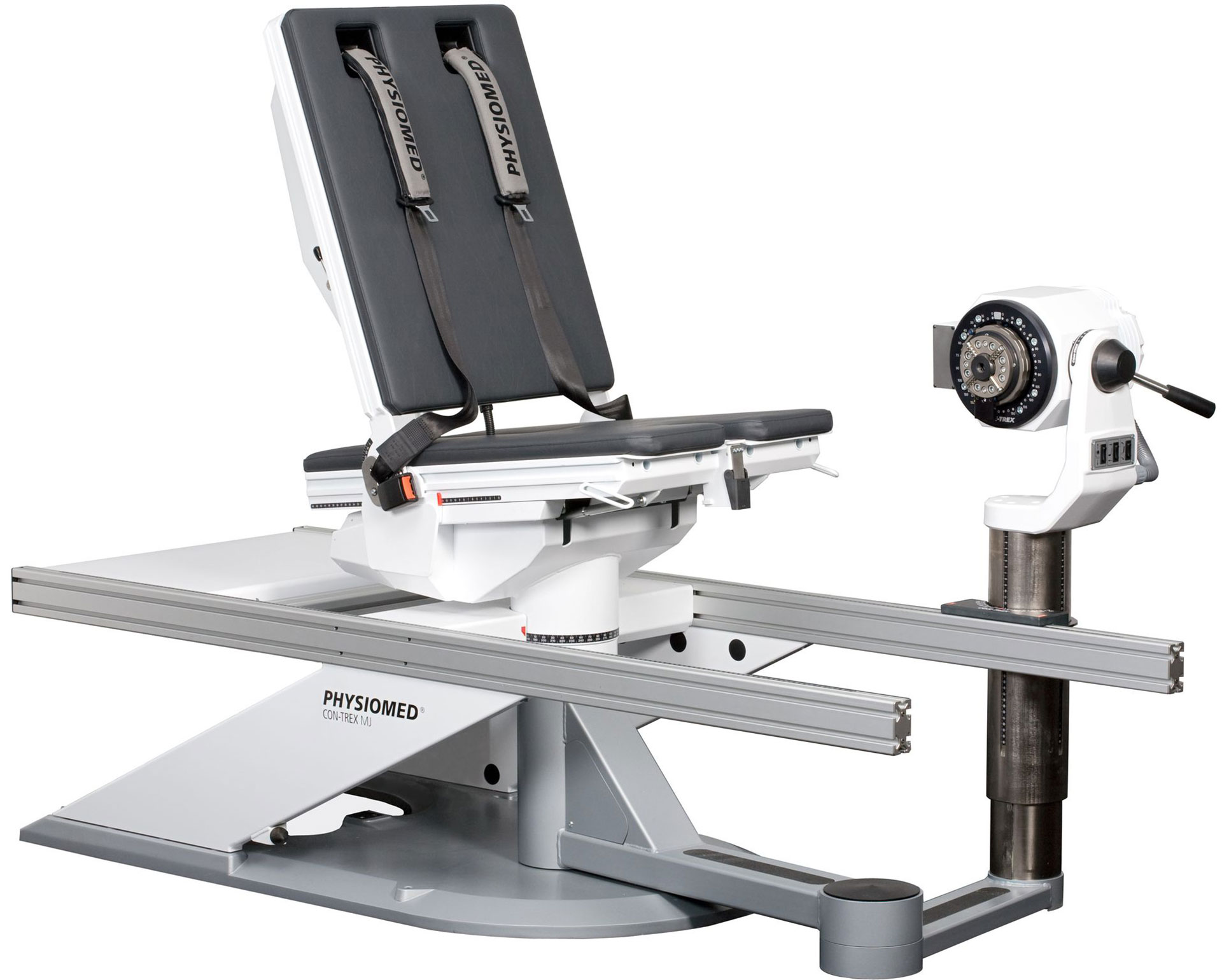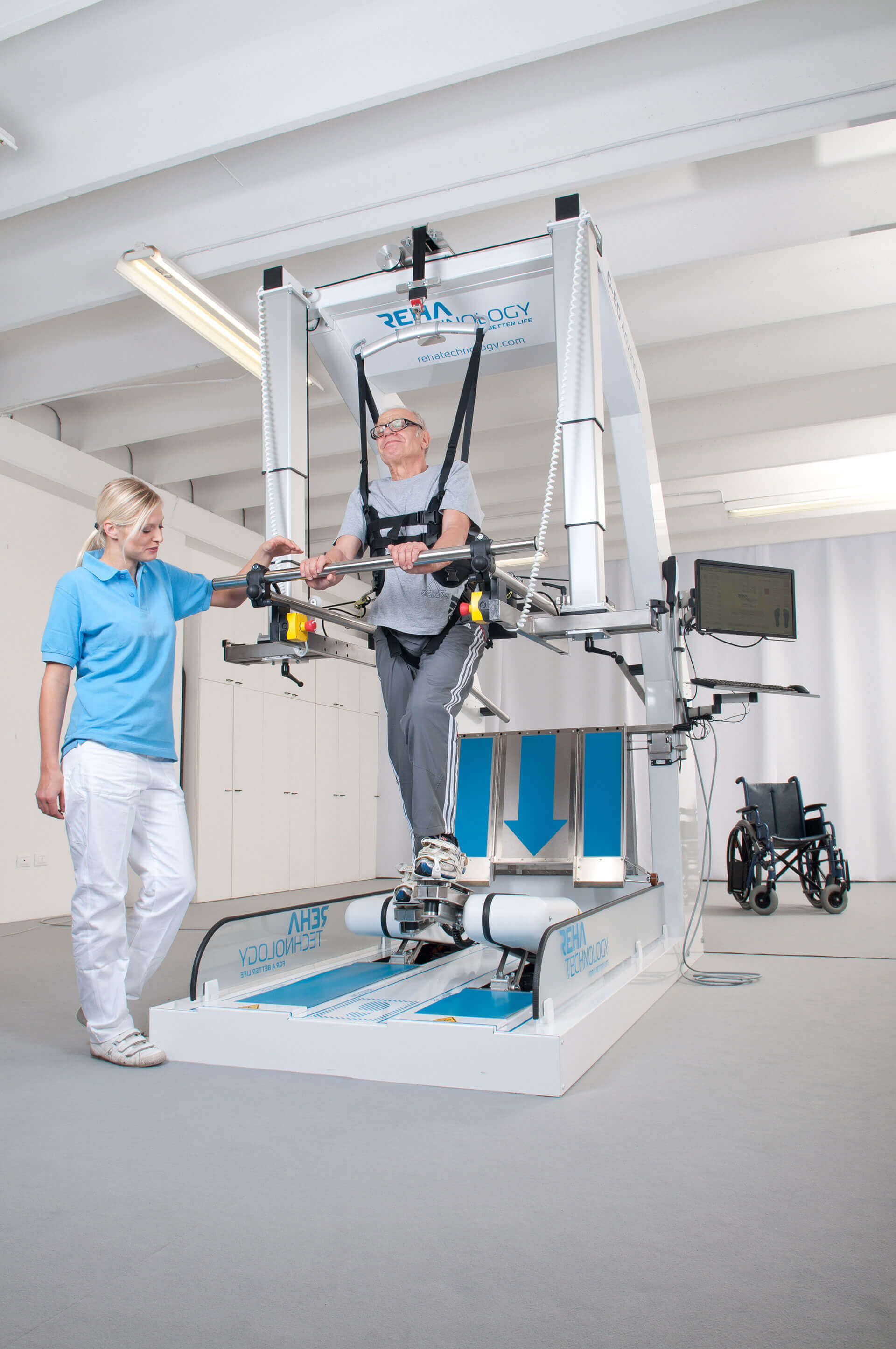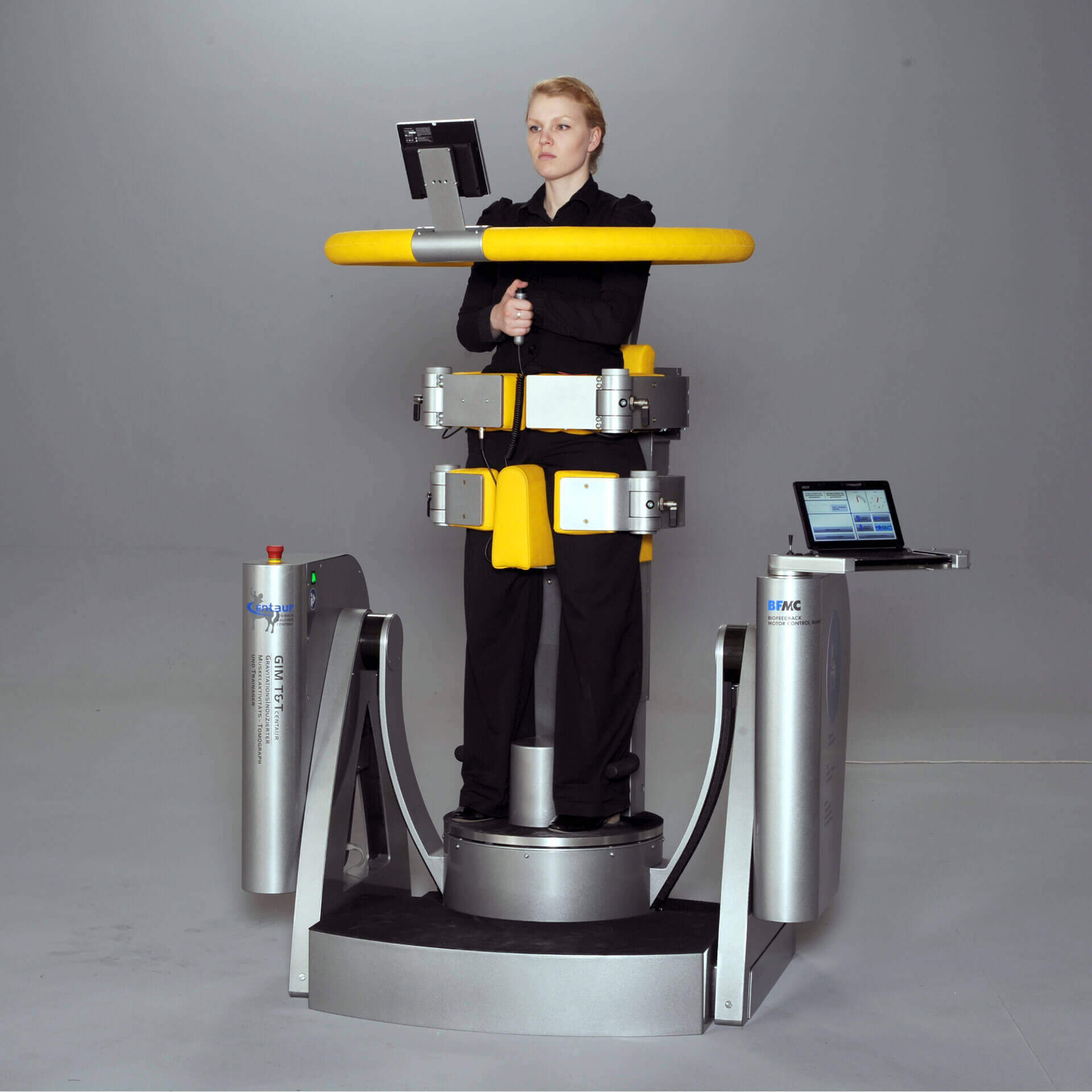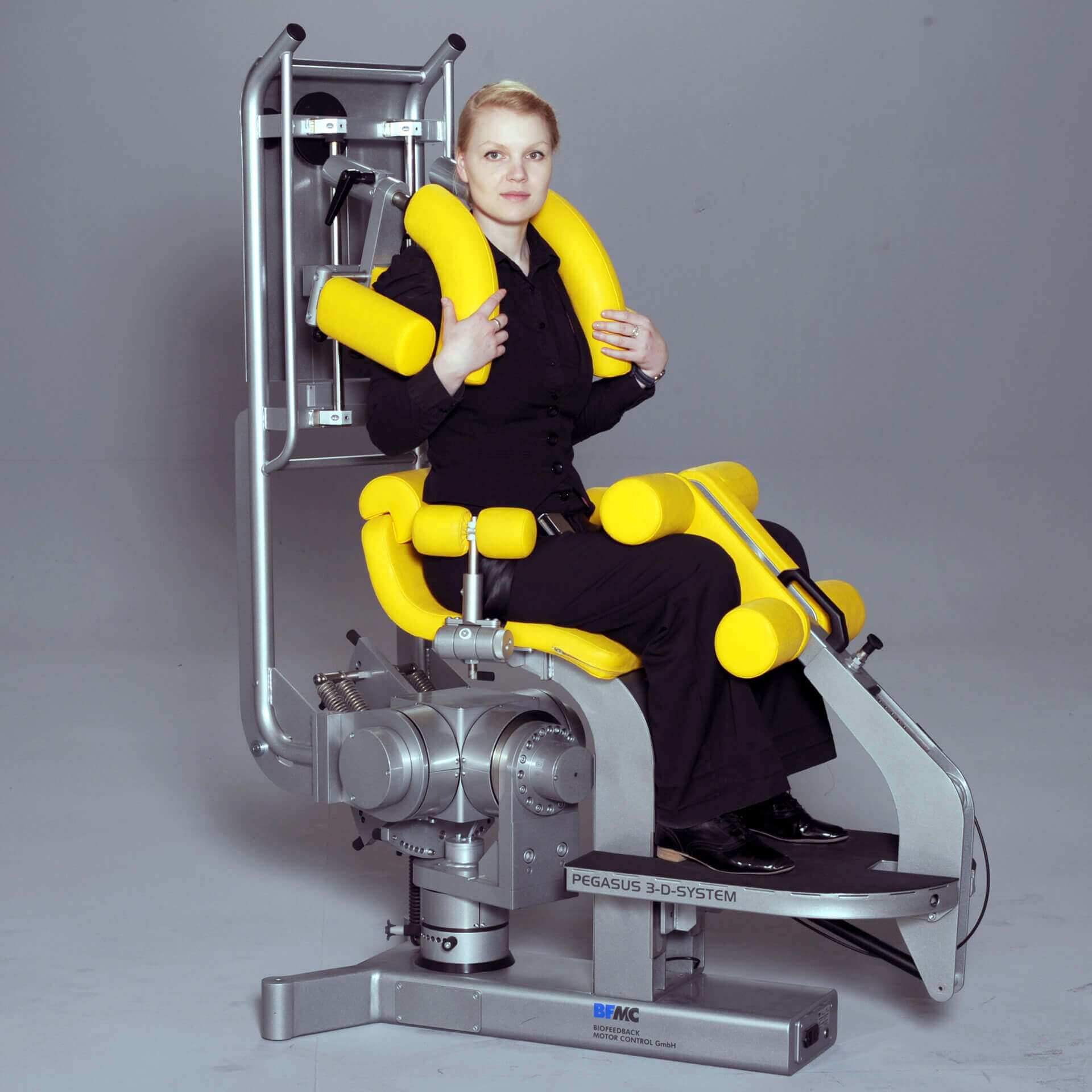CON-TREX
CON-TREX is an ideal tool for analyzing static and dynamic allowable joint load, which allows you to develop individual muscle groups under constant control and adjust the training process at any time.
The system sets new standards for capabilities, flexibility, reliability and safety, as well as ease of use, fast setup and ease of maintenance.
Rehabilitation of neuromuscular disorders using training movements with visual biofeedback, which can be used from the very beginning of functional rehabilitation. Correction, improvement or retraining of everyday movements (for example, using patient movement patterns). KON-TREX helps to achieve joint stability, coordination and adequate movement effort.
CON-TREX is an ideal tool for:
Estimates of speed parameters of movement
High-intensity strength training
Rehabilitation of musculoskeletal disorders
Rehabilitation of neuromuscular disorders
The KON-TREX system includes 4 modules:
Multi-joint module
Leg Press Module
Work simulation module
Upper torso flexion / extension module
REHATECH GEO
The key challenge during gait recovery is not only to teach the patient to re-move on a level surface, but also to develop the skills to move up and down stairs, mimicking daily activities. The G-EO robotic system for locomotor therapy is designed to simulate human gait.
EVIDENCE-BASED THERAPY
The operation of the complex is based on the technology of movement of the working organ, thanks to which mechanical orthoses with the highest accuracy imitate the trajectory of movement of the lower extremities, exactly repeating the pattern of a real gait.
UNIQUE OPERATING MODES
Thanks to the innovative design of the system, for the first time, it is possible to simulate walking not only on a flat surface, but also up / down stairs. More varied training leads to better results, according to numerous studies in the field of medical rehabilitation. In addition, such exercises allow you to fully use the strength and range of motion of the lower extremities.
QUICK SETUP
Due to the special design of the system, as well as the folding ramp, preparing the patient for work takes no more than 5-7 minutes and requires the participation of only one specialist.
PEDIATRIC VERSION
Using a special adapter for working with small patients, you do not need to purchase a separate system. The necessary set of accessories allows you to work with children up to 160 cm tall.
ADAPTIVE MODES
Using pressure sensors built into the platforms for the left and right legs, the system constantly analyzes the force developed by the patients themselves during training and, if necessary, increases or decreases the level of robotic intervention. This mode allows you to use the patient's own strengths from the earliest stages, which ultimately leads to more effective rehabilitation.
A specially designed panel is used for the test, which provides a simple and clear input of answers. The use of such a panel increases the motivation of clients and makes the test application suitable for those who for some reason do not fit a standard keyboard, mouse or touch screen.
PARTIAL MOTION TECHNOLOGY
Partial movement training is used in the early stages of rehabilitation to reproduce the sensation of correct movement of the limb and corresponding movement of the center of mass. With this approach, training is not carried out for the full cycle of the step, but only for its selected segments.
AREAS OF USE
Rehabilitation
Neurology
Traumatology
Pediatrics
CENTAUR
The computerized, diagnostic and rehabilitation system CENTAUR is designed for the development of directly autochthonous muscles of the back using a precisely reproducible load.
It is possible to specifically develop the general musculature of the torso, increase the level of its coordination, as well as deep-lying (autochthonous) muscles.
Detection of neuromuscular imbalances in the lumbar spine and targeted training to correct existing imbalances and deficits.
Thanks to the controlled activation of the autochthonous muscles of the back, targeted training of these muscles became possible for the first time.
Functional training (treatment) to reduce and prevent neuromuscular imbalances and deficits by creating joint tension of the vestibular apparatus and sensorimotor systems of the lumbar, thoracic and cervical regions.
Indications. Vertebral syndromes with the following symptoms: prolapse of the vertebral disc (including postoperative syndrome), protrusion after the acute stage / degenerative changes / cases of spondylosis and displacement of the vertebrae / spinal injury, in relation to conservative or postoperative treatment / recurrent complaints associated with problems of the spinal discs with a significant decrease performance, functional back pain with or without degenerative changes, deficiencies and / or imbalance of the spinal muscles.
The Centaur system works on the basis of the following basic principles of movement:
-With a coordinated tilt of the body, the person's torso tends to stabilize against the forces of gravity
-When tilting and rotating, the body is in an unstable position, so that the balance analyzer sends impulses to the deep muscles
-With a vertical-inclined arrangement during training, muscles are strengthened in a position in which they must do maximum work to support the body
A precisely reproducible load makes it possible to carry out targeted and reliably documented therapy or training
Connecting the simulator to a computer network and storing data for effective testing and training
PEGASUS
Pegasus is a modern, universal system designed for complex diagnostics and rehabilitation of the spine. The system allows accurate and objective measurements in all three axes, aimed at assessing flexibility and muscle strength, and then, based on the data obtained during the measurements, assign the required training program. The training takes place in a biofeedback mode, which significantly increases the patient's level of motivation and leads to an overall increase in the effectiveness of the rehabilitation course
FEATURES OF PEGASUS
The ability to accurately dose structured loads through training with biofeedback
Collection of individual information
Determining the Exercise Required
Training control through feedback
Detailed display of results and training report
PEGASUS CONCEPT
The PEGASUS concept is based on the fact that most diseases of the back and spine are somehow associated with neuromuscular deficits or imbalances. Neuromuscular imbalance is an asymmetry in the development of the muscles. Neuromuscular deficiency is a weakened musculature. They can develop due to various reasons: trauma, lack of exercise, morphological features or characteristics of the patient's daily activities. For successful therapy, it is important to recognize and eliminate deficiencies / imbalances in time:
Neuromuscular imbalances are determined by measuring strength and range of motion in major anatomical planes and comparing the results
Neuromuscular deficits are determined by measuring the strength and range of motion in the main anatomical planes and comparing the results with the standard values
Neuromuscular imbalances and deficits are reduced by creating a certain tension in the ODA through a dosed load.
THREE-DIMENSIONAL TESTING AND TRAINING
With the help of the PEGASUS system, diagnostics and training becomes possible in all three dimensions:
Measurement of the range of motion of the spine to objectify the existing DF, determine the goal of treatment and document the rehabilitation process.
Measurement of tension at any point in the anatomical planes of the motor function of the thoracic and lumbar regions.
Conducting special training (treatment) of the sensorimotor systems of the thoracic and lumbar regions in isometric and isotonic modes.
DOSED LOAD
Only precisely dosed physical activity has a therapeutic effect. It is PEGASUS that allows you to create the desired load individually for each patient and, if necessary, accurately reproduce it in subsequent sessions.
Measurements at any arbitrary measurement point in the spatial range of motion of the lumbar spine:
Isometric Peak Force Diagnostics
Developing flexibility and coordination for auxotonic workloads
Development of strength differentiation and strength coordination during isometric workloads
The development of maximum strength and strength endurance of the muscles of the lumbar spine during isometric workloads.




